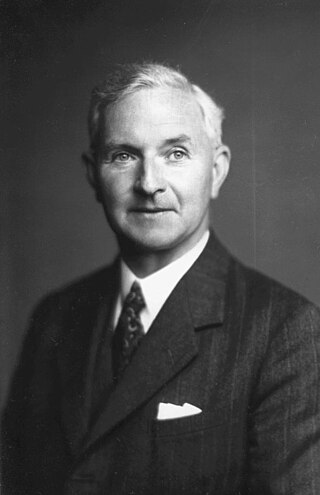
Sir John Edward Lennard-Jones was a British mathematician and professor of theoretical physics at the University of Bristol, and then of theoretical science at the University of Cambridge. He was an important pioneer in the development of modern computational chemistry and theoretical chemistry.
Benjamin Widom is the Goldwin Smith Professor of Chemistry at Cornell University. His research interests include physical chemistry and statistical mechanics. In 1998, Widom was awarded the Boltzmann Medal "for his illuminating studies of the statistical mechanics of fluids and fluid mixtures and their interfacial properties, especially his clear and general formulation of scaling hypotheses for the equation of state and surface tensions of fluids near critical points."

Henry Frederick "Fritz" Schaefer III is an American computational, physical, and theoretical chemist. He is one of the most highly cited chemists in the world, with a Thomson Reuters h-index of 121 as of 2020.
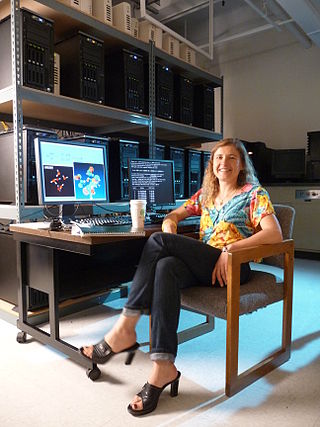
Anna Igorevna Krylov is the USC Associates Chair in Natural Sciences and Professor of Chemistry at the University of Southern California (USC). Working in the field of theoretical and computational quantum chemistry, she is the inventor of the spin-flip method. Krylov is the president of Q-Chem, Inc. and an elected member of the International Academy of Quantum Molecular Science, the Academia Europaea, and the American Academy of Sciences and Letters.
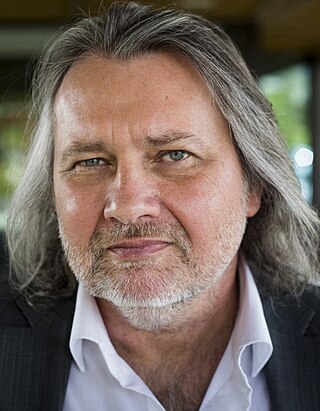
Peter Schwerdtfeger is a German scientist. He holds a chair in theoretical chemistry at Massey University in Auckland, New Zealand, serves as director of the Centre for Theoretical Chemistry and Physics, is the head of the New Zealand Institute for Advanced Study, and is a former president of the Alexander von Humboldt Foundation.
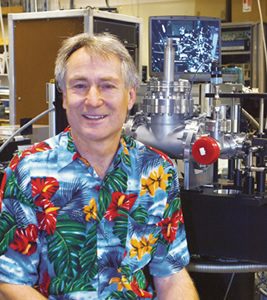
Richard James Saykally is an American chemist. He is currently the Class of 1932 Endowed Professor of Chemistry at the University of California, Berkeley. He has received numerous awards for his research on the molecular characteristics of water and aqueous solutions.
Angela K. Wilson is an American scientist and former (2022) President of the American Chemical Society. She currently serves as the John A. Hannah Distinguished Professor of Chemistry, associate dean for strategic initiatives in the College of Natural Sciences, and director of the MSU Center for Quantum Computing, Science, and Engineering (MSU-Q) at Michigan State University.
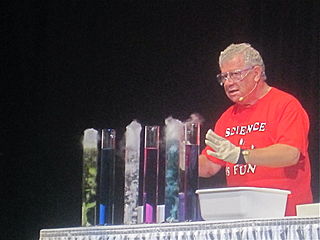
Bassam Z. Shakhashiri is a professor of chemistry at the University of Wisconsin-Madison, where he is the holder of the William T. Evjue Distinguished Chair. An active advocate for science education, he is the author of multiple books of chemical demonstrations. He was the 2012 president of the American Chemical Society and has received numerous awards and honors.

Howard E. Zimmerman was a professor of chemistry at the University of Wisconsin–Madison. He was elected to the National Academy of Sciences in 1980 and the recipient of the 1986 American Institute of Chemists Chemical Pioneer Award.

Emily A. Carter is the Gerhard R. Andlinger Professor in Energy and the Environment and a professor of Mechanical and Aerospace Engineering (MAE), the Andlinger Center for Energy and the Environment (ACEE), and Applied and Computational Mathematics at Princeton University. She is also a member of the executive management team at the Princeton Plasma Physics Laboratory (PPPL), serving as Senior Strategic Advisor and Associate Laboratory Director for Applied Materials and Sustainability Sciences.

Matthew V. Tirrell is an American chemical engineer. In 2011 he became the founding Pritzker Director and dean of the Institute for Molecular Engineering (IME) at the University of Chicago, in addition to serving as senior scientist at Argonne National Laboratory. Tirrell's research specializes in the manipulation and measurement of polymer surface properties, polyelectrolyte complexation, and biomedical nanoparticles.
Anna Christina Balazs is an American materials scientist and engineer. She currently is Distinguished Professor at the University of Pittsburgh and holds the John A. Swanson Chair at the Swanson School of Engineering.
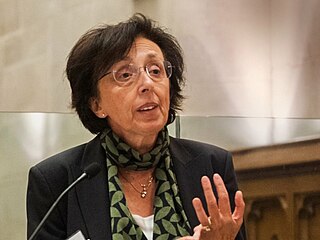
Giulia Galli is a condensed-matter physicist. She is the Liew Family Professor of Electronic Structure and Simulations in the Pritzker School of Molecular Engineering and the department of chemistry at the University of Chicago and senior scientist at Argonne National Laboratory. She is also the director of the Midwest Integrated Center for Computational Materials. She is recognized for her contributions to the fields of computational condensed-matter, materials science, and nanoscience, most notably first principles simulations of materials and liquids, in particular materials for energy, properties of water, and excited state phenomena.
Autumn Kent is an American mathematician specializing in topology and geometry. She is a professor of mathematics and Vilas Associate at the University of Wisconsin. She is a transgender woman and a promoter of trans rights.
Zahra Fakhraai is an Iranian-Canadian materials scientist who is a Professor of Chemistry at the University of Pennsylvania. Fakhraai does research focused on glass transition, nonlinear optics, nanoparticle plasmonics, and polymer physics. She studies the impact of nanoconfinement on the structure of materials. She was awarded the 2019 American Physical Society John H. Dillon Medal. Fakhraai was one of the researchers to start laying the ground work to better understand the optical properties of glass.

Laura Gagliardi is an Italian theoretical and computational chemist and the Richard and Kathy Leventhal Professor of Chemistry and Molecular Engineering at the University of Chicago. She is known for her work on the development of electronic structure methods and their use for understanding complex chemical systems.
Charles Bradley Moore is an American chemist and research administrator. His research focused on the application of lasers to understand the behavior and reaction dynamics of energized molecules and energy transfer between molecules. He is currently professor emeritus of chemistry at the University of California, Berkeley, where he had a long career as a faculty member actively engaged in research (1963–2000). While at UC Berkeley, Moore also served in several administrative roles, including chair of the department of chemistry (1982–1986), dean of the college of chemistry (1988–1994), and director of the chemical sciences division at the Lawrence Berkeley National Laboratory (1998–2000). He was vice president for research at Ohio State University (2000–2003) and held the same position at Northwestern University (2004–2008). He is also professor emeritus at Northwestern. Moore is a member of the National Academy of Sciences.
Manos Mavrikakis is a Greek–American chemical engineer. He is the Paul A. Elfers Professor and the Vilas Distinguished Achievement Professor of Chemical Engineering at the University of Wisconsin–Madison. Mavrikakis is an elected Fellow of the American Association for the Advancement of Science, American Physical Society, and American Vacuum Society.
Anne Bowen McCoy is a theoretical chemist and her research interests include vibrational spectroscopy, hydrogen bonding, and charge-transfer bands.
Kyoung-Shin Choi (Korean: 최경신) is a professor of chemistry at the University of Wisconsin-Madison. Choi's research focuses on the electrochemical synthesis of electrode materials, for use in electrochemical and photoelectrochemical devices.











